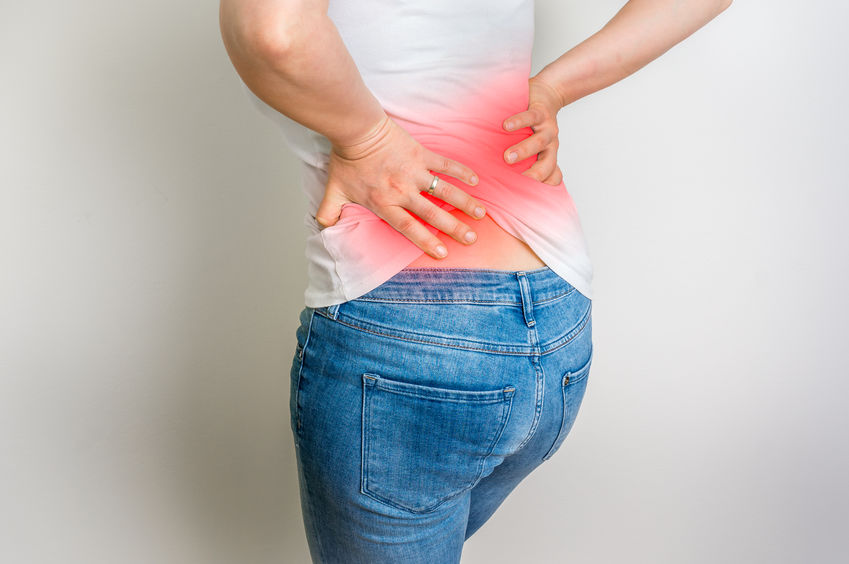Back Pain
A comfortable low back is essential for everyday life and sports.
Back pain is a very common symptom in the general population and among athletes. Its affects 85% of us at some point in our lives. most of us get better after a few months, however 50% of us will have at least one recurrent episode.
Risk factors for Back Pain
Risk factors are the same for men and women up until the age of 50 and after 50 women are more at risk, as are women who have given birth.
There is a strong association between smoking and back pain.
Those of us who suffer from stress, anxiety and depression associated with work are also at increased risk.
Driving a car, sitting and jobs that involve bending, twisting and heavy physical labor are also risk factors.
The Surface Anatomy of The Low Back.
The surface anatomy of the lower back is composed of muscles and bones ( the vertebrae and joints ). The muscles include the erector spinae, lumbar multifidus and longissimus and the quadratus lumborum. The bones are five lumbar vertebrae denoted by the letter L and numbers 1 through 5. We describe the lumbar segments as the L1-2, L2-3, L4-5 or L5-S1 intervertebral joints. The other bones you can feel from the surface are the sacroiliac joints (sacrum/tailbone and ilium) and the bony rims of the pelvis the iliac crests.
Signs and Symptoms of Low Back Pain.
You may be complaining of acute low back pain, chronic low back pain or acute chronic pain.
The pain may be confined to the lower lumbar area (L4-5), be radiated into both buttocks or be on one side unilateral. It may be radiating to the buttock(s), hamstring(s) or lower leg(s).
The pain may be sharp piercing pain, radiating in a narrow band and associated with nerve root irritation as a result of lumbar disc bulge or herniation. More common is a deep-seated ache into the buttock and hamstring.
A physiotherapy examination can accurately identify which segment is responsible for your low back pain and which treatment combination will be most effective in reducing the pain and correcting any abnormality, so you may safely return to everyday life and sport. Occasionally the physiotherapy exam may not be able to identify the pain source and may refer you for review by your General Physician.
Common Sources of Low Back Pain.
- Disc (bulging)
- Spinal (apophyseal) joint
- SI or sacroiliac joint injury/inflammation
- Muscle trigger points (along the spine and in the buttocks).
Less Common Sources of Low Back Pain
- Disc – herniated.
- Spondylolisthesis
- Lumbar instability
- Spinal canal stenosis
- Crush fracture vertebral body
- Fibromyalgia.
Physiotherapy Treatment Techniques.
The treatment technique we select will depend on the diagnosis and how irritable your condition is.
Physiotherapy Treatment for Acute Low Back Pain
- Bed rest in the position of most comfort for 48 hours.
- Taping.
- Pain medication may reduce muscle spasms and NSAIDS may reduce inflammation.
- TENS, interferential stimulation, magnetic field therapy and only if travelling to physiotherapy is not aggravating.
- Therapeutic exercise.
- Education on the contributing postures.
- Gentle massage.
Physiotherapy Treatment for Mild to Moderate Low Back Pain.
We can intensify the physiotherapy once the acute phase has passed and pain and inflammation have reduced.
Correcting the root causes of the mechanical strain for example:
- Poor posture while sitting, standing or driving.
- Poor lifting technique
- Sleeping in a bed with poor support.
Pain Management and Medication:
- In the short term NSAIDS (Non Steroidal Anti Inflammatory Drugs)
- Or simple pain medications.
Mobilization and manipulation: To reduce pain and stiffness by:
- Mobilizing.
- Or manipulating the affected segments.
Soft tissue therapy.
- Massage.
- Trigger point massage.
Trigger Points.
The longer your low back pain has been present the more likely we are to find tight thickened muscles and fascia and multiple active trigger points. Common sites for low back trigger points are the muscles that run down the thoracic spine to the tailbone, the quadratus lumborum which runs between the lower ribs and the iliac crest and the gluteal muscles of the buttock area especially the gluteus medius which is accessible lateral to L4-5 and below the iliac crest.
Neural mobilization.
Tension in the nerves is common in patients with low back pain and tests positive if the slump test and/or straight leg raise test aggravate the low back pain. Careful mobilization of these neural tissues will improve the low back pain and gently recover normal neural movement.
Exercise therapy.
- Stretching the muscles that are tight and contributing to the low back pain, for example; the erector spinae. psoas, iliotibial band, hip external rotators, hamstrings, rectus femoris and calf muscles.
- Stabilizing ( the core spinal stabilizing muscles transversus abdominus and lumbar multifidus often need to be activated as a first step ).
- Strengthening (often starts with posterior chain muscles in particular the gluteal and hamstring muscles).
Risk reduction going forward.
As 50% of us will have at least one recurrent episode of low back pain, treatment is not complete until we address reducing your risk. Patients who do lifting daily for example, will be shown how to prepare by gently warming-up their bodies, using a low-intensity muscle stretching program to practice twice weekly x 10-15mins.
The key to success….?
Adherence or sticking with your home exercise program (HEP) between sessions is the key to your recovery. To help you succeed at home we will provide you with clear, written instructions and / or video of your specific exercise progressions. Throughout treatment you are encouraged to email me directly with questions. For more information please click here to contact me now via email. Thank you and I look forward to hearing from you. Siobhan.
